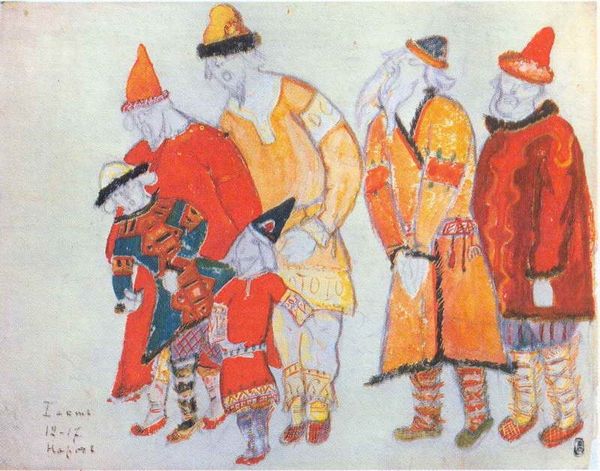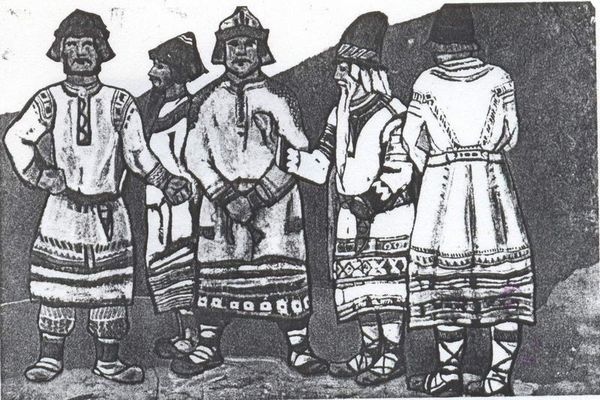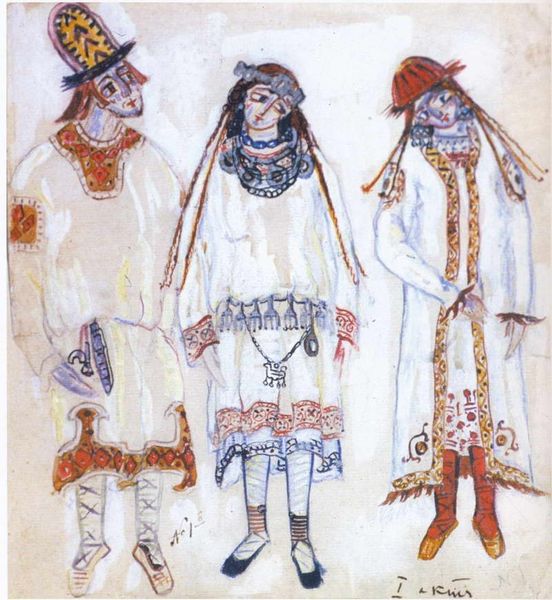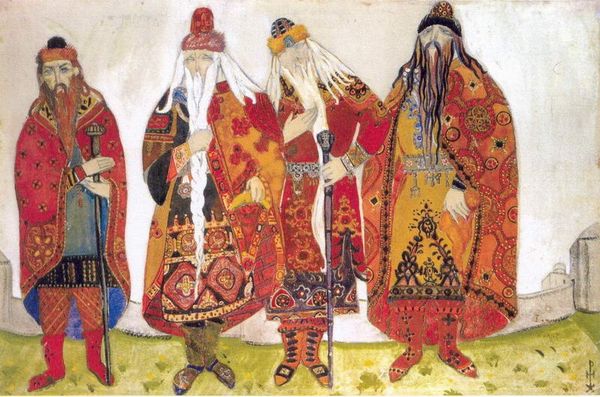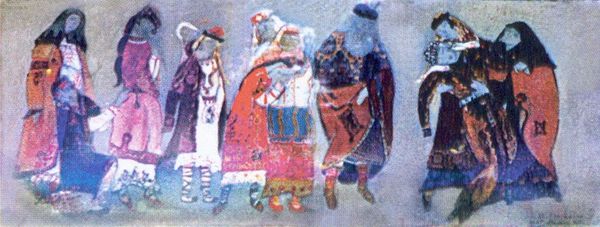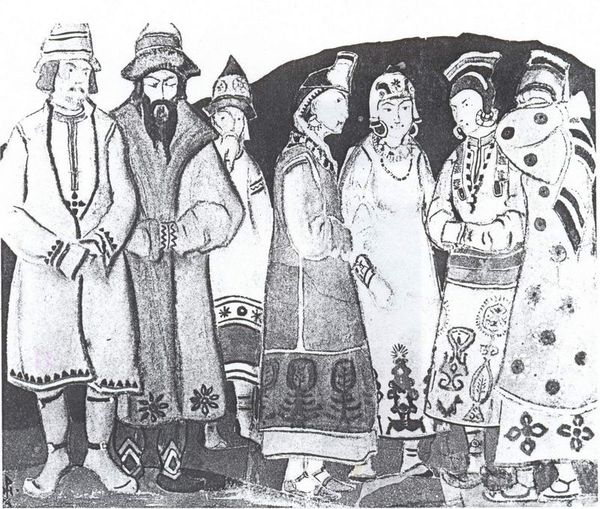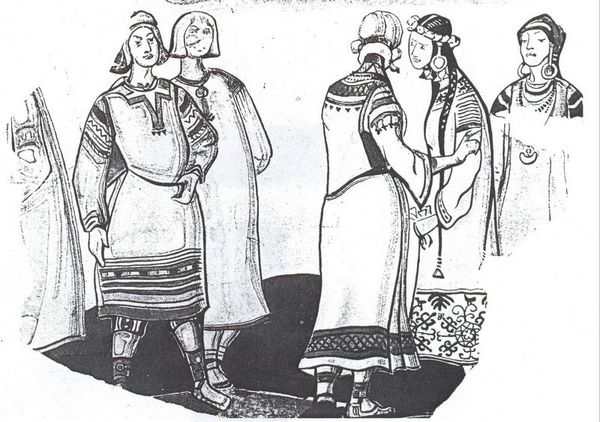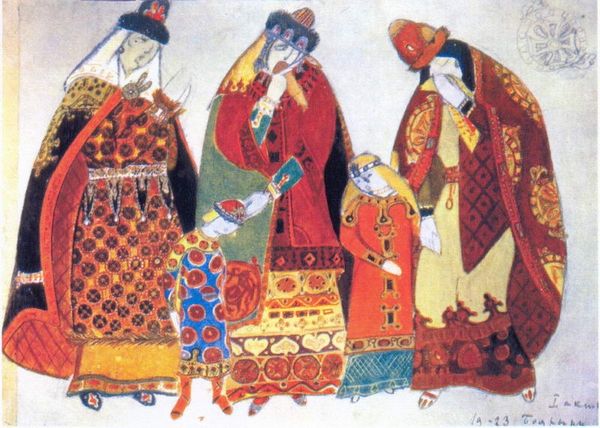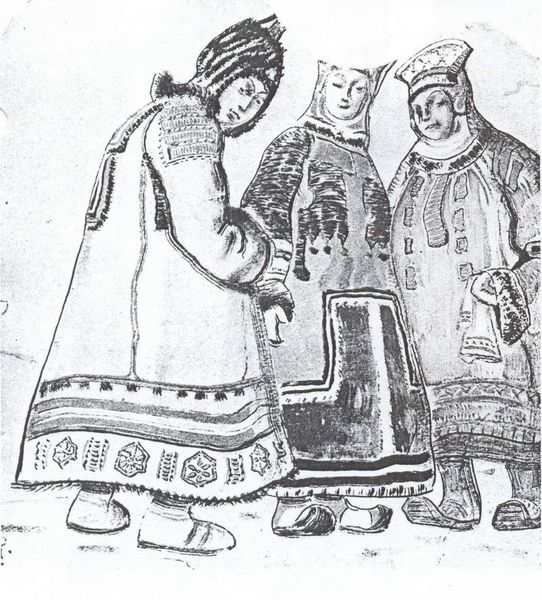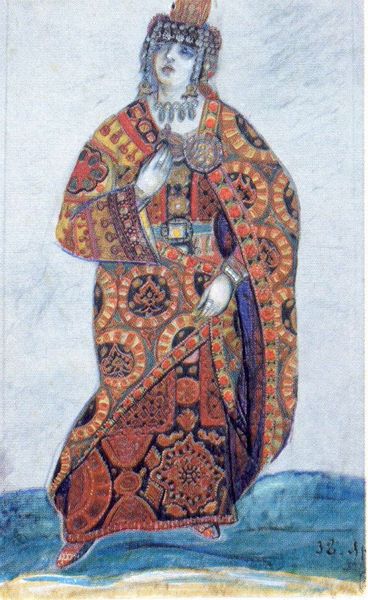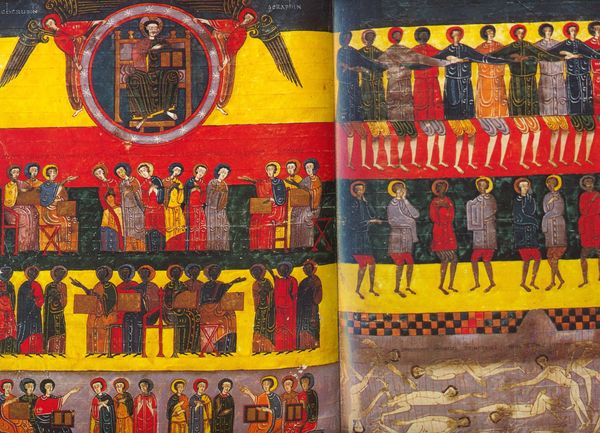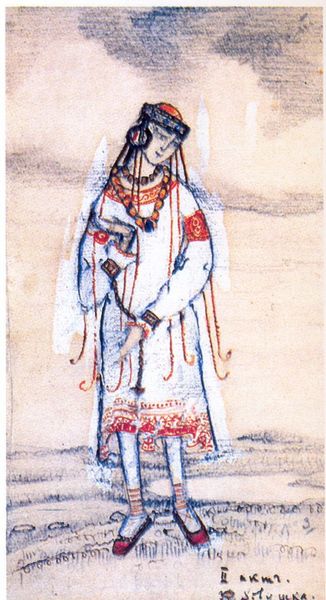
tempera, painting
#
portrait
#
tempera
#
painting
#
charcoal drawing
#
figuration
#
oil painting
#
costume
#
russian-avant-garde
#
genre-painting
Copyright: Public domain
Editor: Here we have Nicholas Roerich's "The Scene with Eight Figures in Costumes," a tempera painting from 1913. I’m immediately struck by the texture of the paint; it feels almost woven, and I'm so curious about the process. What can you tell me about it? Curator: Well, Roerich’s choice of tempera is interesting because of its historical association with icon painting and craft traditions. These figures, so elaborately costumed, are rendered with materials that blur the lines between fine art and traditional artisanal practices. Look at the level of detail in those costumes – how much labor do you imagine went into producing each piece, and what does that tell us about the depicted society's values regarding production and material wealth? Editor: That's a fantastic point! Thinking about the labor that goes into creating both the costumes *and* the painting itself highlights a different kind of value, doesn’t it? A value rooted in production and making, rather than just representation. Curator: Precisely. Consider how Roerich himself – part of the Russian Avant-Garde movement, mind you – chose to depict this genre scene using a medium so closely tied to pre-industrial modes of production. It’s almost a commentary on the rise of industrial capitalism itself, a valuing of handmade craftsmanship over mass-produced goods, wouldn't you agree? Editor: I think so. Seeing it that way definitely complicates the artwork, making me consider more than just the aesthetic qualities of the piece. I'm really compelled to do a deep-dive research into what costumes mean within a culture and the different processes that may be used to create tempera paintings and the effects those processes have on the artwork. Curator: Indeed! By focusing on the material conditions of creation and consumption, we can uncover rich insights into Roerich’s critique of early 20th-century society and the role of art within it. It brings the “how” of artmaking to the forefront.
Comments
No comments
Be the first to comment and join the conversation on the ultimate creative platform.
